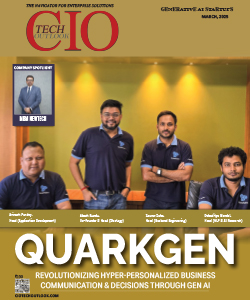Himadri Signs Pact with Sicona for Silicon-Carbon Anode Technology
CIOTech Outlook Team
Tuesday, 13 May, 2025
EY and SAP Unveil Integrated Finance Service to Accelerate Growth
CIOTech Outlook Team
Tuesday, 13 May, 2025
C-DOT, Synergy Collaborate on Quantum Key Tech Using Drones
CIOTech Outlook Team
Monday, 12 May, 2025
Google and Elementl Power Team Up for Nuclear Projects to Power AI
CIOTech Outlook Team
Monday, 12 May, 2025
UniCredit and Google Cloud Partner to Drive Digital Transformation
CIOTech Outlook Team
Monday, 12 May, 2025
GMV Unveils LUPIN a GPS-Like Navigation System for the Moon
CIOTech Outlook Team
Monday, 12 May, 2025
LG Innotek, Boston Dynamics Develop Atlas Robot’s Advanced Vision
CIOTech Outlook Team
Monday, 12 May, 2025
Unlocking Efficiency: The Rise of Integrated Asset Management Solutions
Janifa Evangeline, Assistant Managing Editor, CIOTechOutlook
Monday, 12 May, 2025












